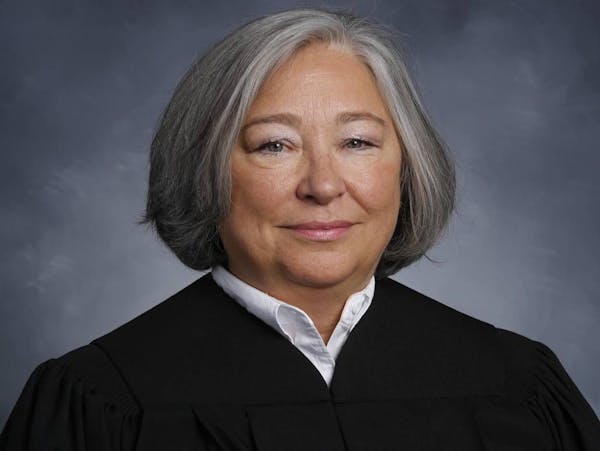Citing the potential for harassment and unwanted publicity, the Hennepin County judge presiding over the case of Mohamed Noor has ordered that the identities of jurors remain sealed indefinitely, two days after jurors convicted the ex-Minneapolis police officer of murder and manslaughter in the shooting death of Justine Ruszczyk Damond.
In a three-page filing issued Thursday, Judge Kathryn Quaintance ordered that the prospective juror list, juror profiles, questionnaires, transcript of jury selection and original verdict forms containing the signature of the foreperson remain under seal until "further order of the Court."
Jurors "are free to speak with whomever they choose about the case and to identify themselves should they so choose," the order said. Quaintance wrote that she will revisit the issue in 90 days.
"At this time immediately following the verdicts, given that every detail obtained about the jurors in voir dire or in open court has been published, that community groups are organizing protests, and that the Court is receiving correspondence from the public with opinions about the case, the evidence, and the outcomes, the Court finds that there is likelihood of the publication of identifying juror information and of unwanted publicity and harassment resulting therefrom," she wrote.
On Tuesday, the jury of 10 men and two women — after deliberating for less than 10 hours — found Noor guilty of third-degree murder and second-degree manslaughter in the July 2017 death of Damond, whom Noor shot after responding to her 911 call about a possible rape behind her south Minneapolis home. He was acquitted on the more serious charge of second-degree murder.
Quaintance's latest order drew a strong rebuke from Suki Dardarian, the Star Tribune's managing editor, who sent a letter to the court before the trial raising concerns about restricted media access.
"We shouldn't have to work that hard to ensure our rights in one of the most important cases in this community ever," Dardarian said. "The more light we can shed on this case, the better this community is going to be, and it's hard to do that when we don't have any additional information than what we saw in court, and without talking to the jurors who rendered a pretty powerful verdict."
Joseph Daly, emeritus professor at Mitchell Hamline School of Law, said it's rare in Minnesota to seal juror names and related information. Daly reviewed the judge's order and the case law she cited, and he said her decision has sound legal footing.
"It's good to get this information [public] as fast as possible in order to fulfill due process of law, but it's also good to protect the jurors and to protect them from harassment and from danger," Daly said. "I don't have any problems whatsoever with the way the judge is handling this."
The practice of making jurors' names public is part of the court's promise of a transparent process, he said, adding that the Noor trial is unusual in many ways.
"I never had a case that was in the spotlight like this that generated such strong feelings both locally and worldwide," Daly said. "The typical jury trial is quite different."
As Noor awaits sentencing on June 7, hundreds of pieces of evidence and hours of body-camera footage remained in the court's possession Wednesday and out of the public eye.
The state courts' own rules require them to make evidence — including videos and photos — public at the conclusion of a trial, but judges have discretion on the timing, just as they do on the release of the names of jurors on a case.
The Hennepin County District Court has not said when evidentiary data will be released. Jill Oliveira, spokeswoman at the Department of Public Safety, which oversees the Bureau of Criminal Apprehension, said investigative data are not public under Minnesota statute until "exhaustion of or expiration of all rights of appeal."
Before the start of trial, Quaintance issued an order to shield what she deemed "sensitive" body-camera footage from media and the public in attendance, expressing a desire to protect the dignity and privacy of Damond and her family. A coalition of local media outlets and open government groups, including the Star Tribune, challenged the judge's plan as unconstitutional.
Just before opening statements in the trial began, Quaintance reversed herself, saying she was bound by First Amendment case law, which favors the coalition's argument.
"The court, like the jury, must follow the law — even if I disagree with it," she said.
Staff writer Chao Xiong contributed to this report. Libor Jany • 612-673-4064 Twitter: @StribJany

Walz, St. Paul leaders urge support for copper wire theft bill: 'We've got to get in front of it'
Body of missing teenage boy recovered from southwest Minnesota lake

High winds flipped a FedEx truck traveling on Bong Bridge in Duluth

A tale of 124 hoarded Minnesota cats has at least a hundred happy endings

